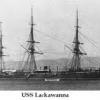-
Posts
6,361 -
Joined
-
Last visited
Content Type
Profiles
Forums
Gallery
Events
Everything posted by Canute
-
EG, nice parts. Another tool for releasing the 3D parts from their matrices is this saw: http://umm-usa.com/onlinestore/product_info.php?cPath=21_28&products_id=35 Very fine teeth. And proceed slowly with cutting.
-
Yeppers, lots of light and magnification. And some fine tweezers, etc for manipulating said PE. Your fingers are too big for some of that stuff
-
Yes, the adds make it pop. Well done.
-
Nice save, LT. Intricate parts must have lead to some very creative language and body-english. 😉
- 211 replies
-
- prince of wales
- tamiya
-
(and 2 more)
Tagged with:
-
Glad to read y'all and or your spouses have made good recoveries. Family and health are serious matters. All we need is Lou piping in with his tales. 😁
-
EG, that's what I get for pulling data out of my "trunk" instead of looking it up in a book. So much stuff to remember and too few functional brain cells.😉 Carry on.
-
EG, nice recap of 2nd Guadalcanal. That radar gizmo was in it's teething stage and a lot of the task force/group commanders didn't fully understand the ranging and tracking capabilities. We lost a number of fighting admirals, like Dan Callahan, because of this lack of understanding of radar's capabilities. Willis Lee had a good understanding of radar. He led the force that engaged the South attacking force in Surigao Strait in 1944. His defense in depth put paid for the old Pearl Harbor battleships.
-
HMAS Australia and Canberra were at Savo. Canberra was sunk there. No mention of any other Allied ships in any later actions in that theater. Tassafaronga is the last engagement covered in Neptune's Inferno. The book covers Savo the night of August 9 thru Tassafaronga on November 30. Both sides lost 24 ships each over the time period covered. Now I'm going to have to re-read that book. So much interesting stuff.
-
EG, I'm in. For some background, the naval battles around Guadalcanal were nicely covered by James Hornfischer in "Neptune's Inferno. I will describe that whole series as a knife fight inside a telephone booth.
-
I can second that Roger. My older cousins looked with disdain at my Monogram and Aurora plastic airplanes. They built the wood and tissue kinds. I built one and decided the caved in look of the tissue over frames wasn't prototypical. As molding technology has improved, our expectations grow immensely.
-
Lou, there weren't enough Herks, Starlifters and C-17s to haul all the troops & equipment needing hauling. Uncle Sugar couldn't hire contract airliners, too pricey. So, the KC-135 and KC-10 hauled some missions. Most units liked us hauling them, since we flew twice as fast as the Herks. Yeah, those red seats left a lot to be desired. Mine had way better padding, too. More like your easy chair. And it swiveled, too.
-
Even us AF types called 'em that. The Hook seems to be the Herky of the helo world. Oh, boy, good old red troop seats. Red nylon webbing stretched between 3 aluminum poles into a chair shape. And then lap belts to strap in with. In the Stratobladder (KC-135) in passenger hauling mode, we scrounged airliner seats for the self loading baggage from old airliners parked out in the Boneyard in Tucson, AZ. This passenger role was not one the old Strategic Air Command boss, Curtis LeMay wanted to do, so all the 135s came with plywood floors. When SAC disappeared in 1991 and the 135s went into Air Mobility Command, that leadership went ballistic when they found out that the 400 or so a/c they inherited could not haul cargo due to the light flooring. They eventually had clip on roller tracks for about 25% of the 135s.
About us
Modelshipworld - Advancing Ship Modeling through Research
SSL Secured
Your security is important for us so this Website is SSL-Secured
NRG Mailing Address
Nautical Research Guild
237 South Lincoln Street
Westmont IL, 60559-1917
Model Ship World ® and the MSW logo are Registered Trademarks, and belong to the Nautical Research Guild (United States Patent and Trademark Office: No. 6,929,264 & No. 6,929,274, registered Dec. 20, 2022)
Helpful Links
About the NRG
If you enjoy building ship models that are historically accurate as well as beautiful, then The Nautical Research Guild (NRG) is just right for you.
The Guild is a non-profit educational organization whose mission is to “Advance Ship Modeling Through Research”. We provide support to our members in their efforts to raise the quality of their model ships.
The Nautical Research Guild has published our world-renowned quarterly magazine, The Nautical Research Journal, since 1955. The pages of the Journal are full of articles by accomplished ship modelers who show you how they create those exquisite details on their models, and by maritime historians who show you the correct details to build. The Journal is available in both print and digital editions. Go to the NRG web site (www.thenrg.org) to download a complimentary digital copy of the Journal. The NRG also publishes plan sets, books and compilations of back issues of the Journal and the former Ships in Scale and Model Ship Builder magazines.



